A peal of bells marks the start. Then comes a beating of drums. A barely perceptible breeze carries the scent of hay. Collectively, a crowd of thousands holds its breath, shoulder to shoulder in the plaza principal. Among them, standing tall, is a single rider, frock-coated on a glossy black stallion. He is the first caixer (horseman) leading a cavalcade that will dance through the vein-like village streets, as the bolder members of the throng – hyped on local Xoriguer gin and Fanta limón (pomada) – touch the horses’ hearts for luck. This is the jaleo. This is Menorca.
The scene plays out all summer along the easternmost and sleepiest Balearic, lower-key and less crowded than Mallorca and Ibiza. It is also the greenest island, growing cautiously, a Unesco biosphere reserve for almost 30 years. But under Menorca’s slow, siesta-dazed surface is an intensity most keenly felt at its fiestas.
Working west to east, from June to September, the island’s towns host a week of saints’ celebrations, starting with Sant Joan in Cuitadella and ending in the capital, Mahón (known locally as Maó), with Festes de Gràcia. There are horses, fireworks, salsitxes (sausages) and churros, drinks and dancing. Menorca and its fiestas are inextricable. But like most things hinged on big crowds in small places, they’ve been on pause.
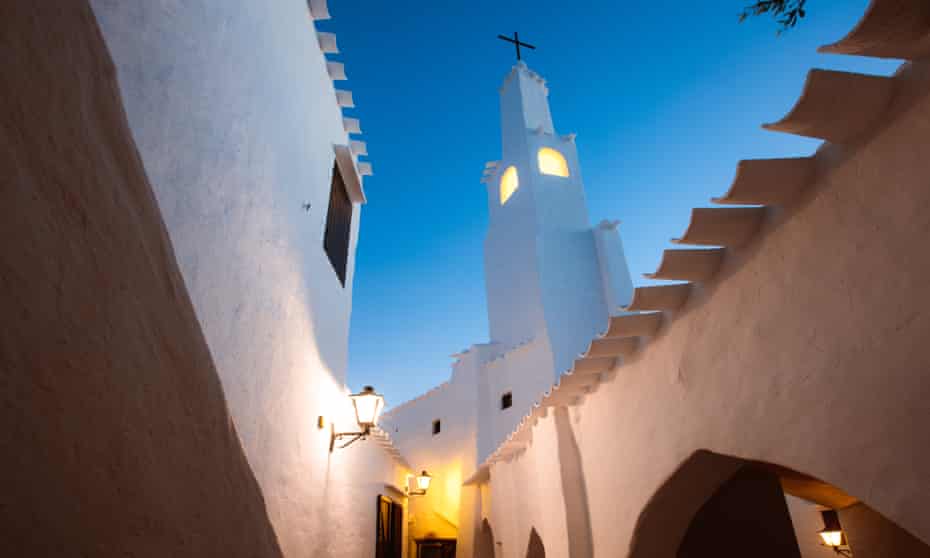
After a two-year interval, I am back, and in many other ways the island feels unchanged. It still sounds like softly hooting owls, rustling palms, off-time cockerels and church bells. It still tastes like sangria and salt and pa amb oli (bread with olive oil). It still looks like geckos darting through gaps in drystone walls, beige against blue sky. And it still feels ridiculously good to be here. Menorca is my happy place. Its sleepy, dusty, blackberry-fringed roads, whitewashed farmhouses and brilliant shocks of bougainvillaea are as much a part of me as the red buses of my native London.
It’s where my grandparents – who bought the front, and later the back of a whitewashed farmhouse in Sant Lluís, Maó, in 1967 – became pariahs for painting their shutters sunshine yellow. (The front set is now regulation green, the back still defiant gold.)
Quick Guide
Saturday magazine
Show
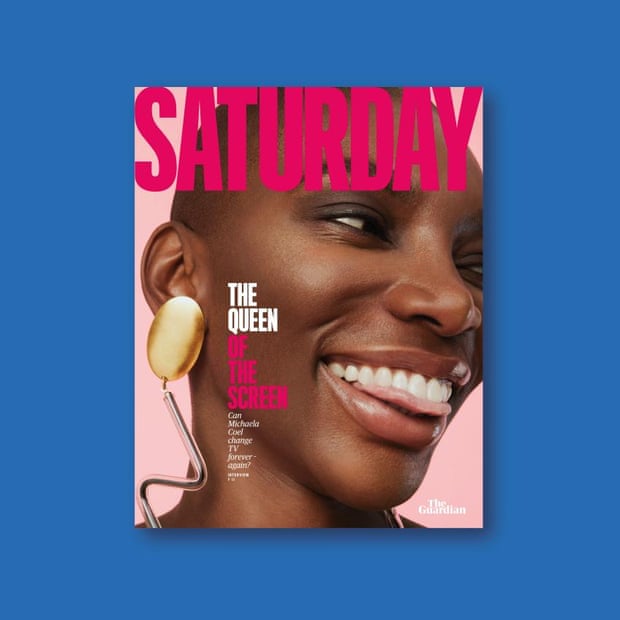
This article comes from Saturday, the new print magazine from the Guardian which combines the best features, culture, lifestyle and travel writing in one beautiful package. Available now in the UK and ROI.
It’s where my mum and uncle spent their formative summers, driving from England with their £50 “overseas travel allowance”, which was carefully rationed at the beach bar in Binibeca. And it’s where my uncle spent a night in a cell by the church for insulting Franco to the Guardia Civil.
It’s where I spent my formative summers, too, running between tables at tapas bars, high on menorquinas (ice-cream frozen into hollowed fruit). I’ve come here after exams, after breakups, and after a festival in Valencia when I flew across with a live chicken in the next seat. I lived here alone one summer and ate so much cheese the señora at the supermarket deli still greets me warmly, hastily unwrapping formatge de cabra.
So arriving into the hot morning air feels as much like coming home as going on holiday. This year I’m bringing fresh eyes with me – taking an island newcomer to my all-time favourite places. It’s part comeback tour, part tasting menu.
We hit venerable tapas restaurant La Rueda in Sant Lluís for escalivada (roasted vegetables) and calamars a la planxa. Next, in the starry garden of country house La Caraba, we eat fresh interpretations of traditional dishes: caldereta, the local lobster stew, and torrijas, a sort of Spanish french toast.
We have crisp cava and pintxos at Mercat de Peix, the old fish market in Maó, chasing anchovies and tapenade on bread down with fig pastries from the bakery next door. We eat, repeatedly, at scenic winery and restaurant Binifadet (if Menorca is my happy place, Binifadet’s €16-a-bottle espumoso is my happy drink).
There’s people-ogling at Chèspir Bar on picturesque Cales Fonts port (at the end is the puerta de Eos, the first point that dawn light hits Spain). There’s a euphoric gig at Es Claustre, Maó’s cathedral courtyard turned music venue. And there’s snorkelling in caves and coves around Binidalí.
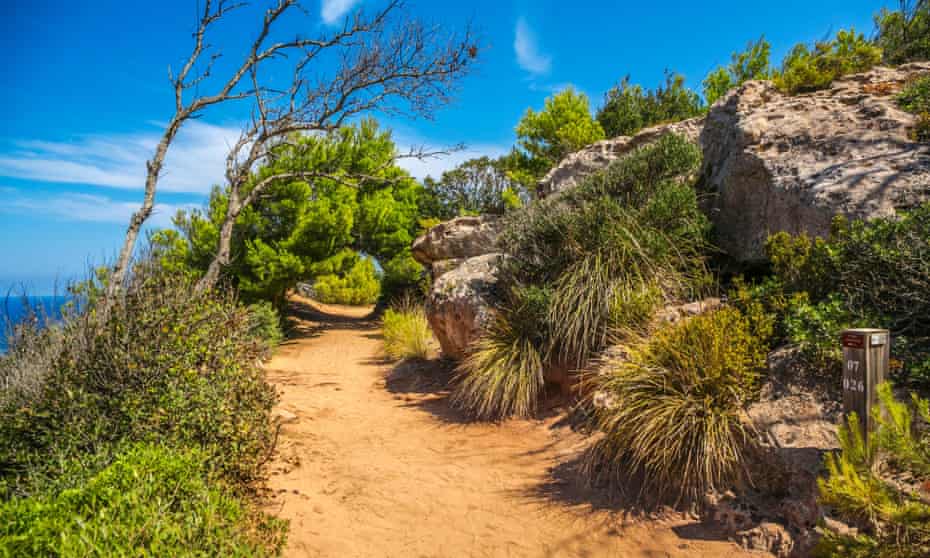
We walk parts of the Camí de Cavalls, the coastal path that circles the island, up to bronze age stone talaiots and along the cobbled streets at Binibeca Vell. And we walk home, counting the Perseids’ shooting stars. Showing old places to new eyes makes them especially special: the walls whiter, the sun brighter, and the pan con tomate more tomatoey.
There’s a lot of new, too. I catch the boat from Maó harbour to Illa del Rei, home to an 18th-century hospital, and now the newest Hauser & Wirth gallery. It’s big news: international art name shacks up in quietest Balearic, its galleries filled by Mark Bradford, its gardens designed by Piet Oudolf (of New York High Line fame), its restaurant run by Binifadet. Its local initiatives include astronomy classes.
It speaks to a wider trend, too, a revival. “Bringing new life to historical sites,” as Mar Rescalvo of Hauser & Wirth Menorca puts it. Like many, Menorca-born Rescalvo left the island to find work. Now she’s back, part of the new wave. “There’s increasing demand, reinforced by the pandemic, for spaces immersed in nature, aligned with Menorca’s values of conservation and sustainability,” she says.
She reels off a list: the island’s first co-living space, AdD LiVitum; Galeria Cayón in an old Maó cinema; and contemporary gallery Lôac in Alaior. Es Claustre “is a historical site that hosts live music”, while chefs such as David de Coca at Sa Llagosta and Silvia Anglada at Es Tast de na Sílvia are reinventing Menorquin cuisine. As a visitor, I wish I had more time to play; “as a Menorcan it’s certainly exciting to see,” says Rescalvo.
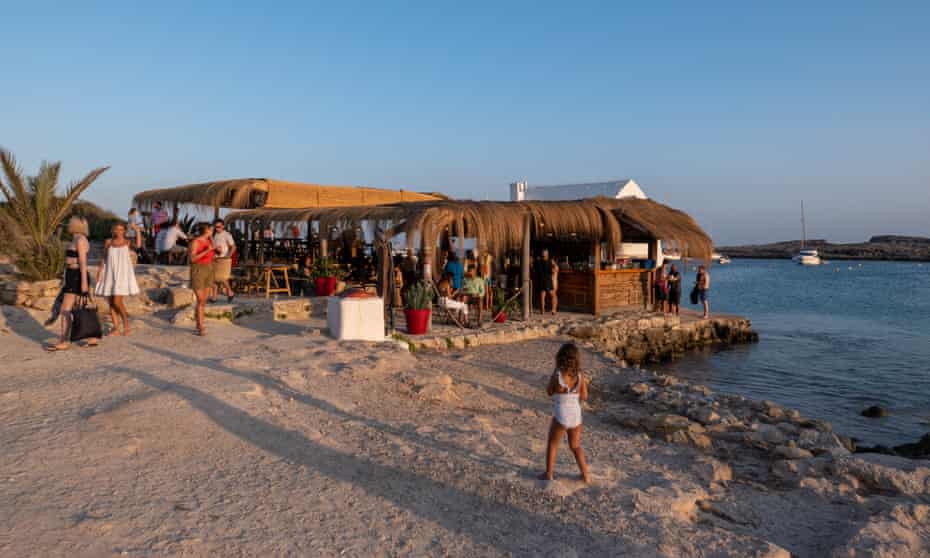
There’s one more big comeback kid: the Bucaneros chiringuito (beach bar) at Binibeca. Known widely as Santiago’s after the man who ran it, it is a Menorcan icon. There are photos of my grandparents here with Santiago; snaps of me dressed only in ice-cream, brown legs swinging over brown rocks. Everyone here has a connection, so when the bar shut down, the family behind Binifadet revived it.
“It connects with the spirit of the island,” says Patricia Menéndez, whose father-in-law founded Binifadet. “Part of the childhood memories of locals and tourists, it’s a symbol of Binibeca.” Bucaneros reopened this summer: same sun-drenched spot, new elevated menu.
This is where we head for pomada sundowners after days in, on or under the sea. Maybe in other years I’d expect to be drinking my gin at a jaleo, or fiesta. But here, this year – with an iced glass and some mussels, watching pedalos pass by and kids play Frisbee as the heat fades and Menorca eases into evening mode – the beach bar seems a pretty good place to toast a comeback.
Where to stay
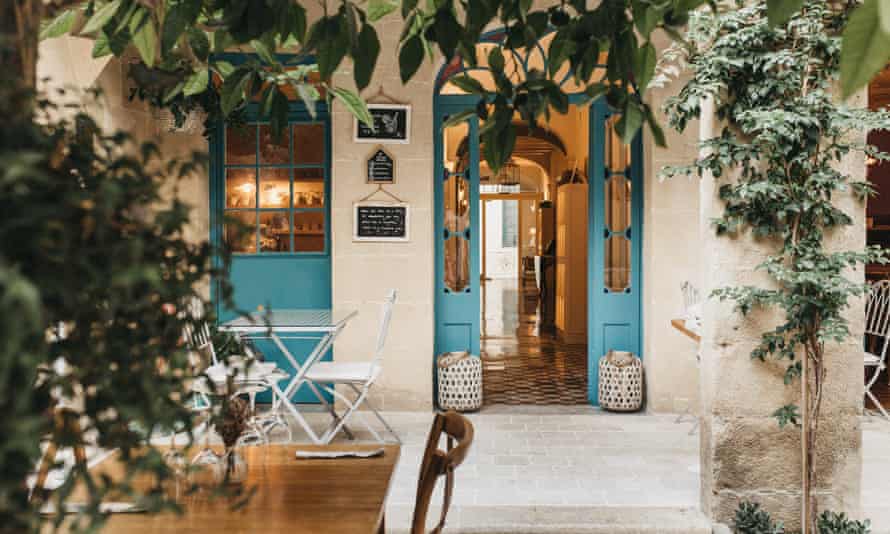
Hotel Rural Biniarroca is a traditional farmhouse in Sant Lluís, near Binifadet (from €120 a night B&B)). In Mahón centre, Jardí de Ses Bruixes has a gorgeous courtyard restaurant and great breakfast (from €160 a night B&B).
Coves to caves: Three ways to explore the island

From cove to cove
Take a cove-hopping boat trip with Faralmar, sailing up the east coast from Mahón past Sa Mesquida beach to the famous Favàritx lighthouse, or south past the quiet coves, caves and cliff-jumping spots around Ses Olles, Caló Blanc and the Binis. From €430 for a half day (four people), with skipper, paddleboards, snorkels, snacks and beers.
Go cave clubbing
Hit sunset sessions at Cova d’en Xoroi, a south coast bar and club carved into the cliff face. There are day tours and DJs until dawn, but the ambient evening in-betweener eases into a spectacular sunset, with a drink, music and clifftop vista for €20, 5pm-10pm.
Walking
Walk bits of the 186km Camí de Cavalls, the ancient path that hugs the coast; walk around talaiot megaliths (Menorca has the highest concentration of prehistoric monuments in the world, so you won’t miss them); and up Monte Toro at sunset – Menorca’s ever-visible high point, topped with a legend-imbued chapel and spectacular bar.





